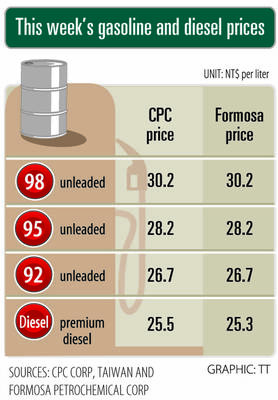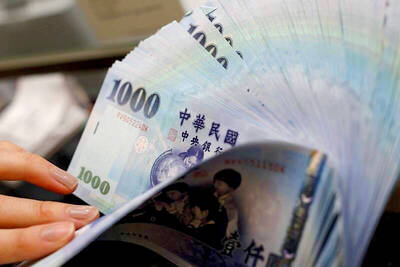When it comes to investment advice, would you trust a financial professional or a robot?
A growing number of people are choosing the latter, on the belief that algorithms can provide rational and dispassionate advice at a cost well below that of traditional advisers.
A handful of automated investment startups created in the past few years now have more than US$4 billion in assets under management, according to Forrester Research.
It is a small segment of a trillion-dollar wealth management industry but growing at a red-hot pace, Forrester analyst Bill Doyle said.
“This is a more meaningful crop of disruptors than we’ve seen for many years, really since the Internet brokerages emerged,” the analyst told reporters.
Doyle said the digital investment services appeal to young adults who lack the minimum — often US$100,000 to US$1 million — for traditional wealth managers, but who want advice or management of their investments.
Robo-adviser firms often allow customers to set their preferences and let the algorithm do the rest — trading, rebalancing and minimizing taxes.
Costs are often far less than a traditional advisory firm, which might charge 1 percent or more of a customer’s assets.
Wealthfront, the largest of the new breed, announced this month it had reached US$2 billion in assets under management in just over three years.
The California startup has an investment team led by Princeton University emeritus professor of economics Burton Malkiel, the author of a 1973 book that championed “passive” investing in low-cost indices for stocks, bonds and other assets.
The strategy is based on the idea that “active” managers rarely outperform over the long term on a broad index such as the Standard & Poor’s 500, especially when manager fees are included. These firms mainly recommend exchange-traded funds that offer these blends of assets.
Other startups including Betterment and FutureAdvisor use a similar formula — turning over daily portfolio management to an automated algorithm that selects investments based on a customer’s risk profile, age and other factors, in an effort replicate broad market returns.
“More people are searching for a technology-first automated solution,” Betterment’s Joe Ziemer said.
The New York startup launched in 2010 now has 73,000 customers and US$1.6 billion under management.
Betterment’s average customer is 36 years old but its fastest growing segment is people over 50.
The mainstream financial industry has taken notice.
The large investment firm Charles Schwab this month launched its “Intelligent Portfolios,” using a similar method, without any fees beyond the underlying investment fund costs.
Schwab is likely to quickly overtake the “pure play” automated firms but will not put them out of business, according to Doyle.
“Schwab’s entry will raise this whole market. It brings credibility to this model,” Doyle said.
However, Doyle said the large investment firms have done little to appeal to young adults with relatively small amounts to invest.
Some financial advisers argue that an algorithm can never replace the personal recommendations and hand-holding a live person can provide.
“Our conversations are deeper. We talk with people about their goals, about saving for retirement, for that home they want to buy.” National Association of Insurance and Financial Advisors president Juli McNeely said. “Sometimes my biggest job is to talk people off the bridge. When there is a market panic, they want to jump. We need to talk it through so they understand what’s happening. It’s a comfort to have someone to talk to.”

Merida Industry Co (美利達) has seen signs of recovery in the US and European markets this year, as customers are gradually depleting their inventories, the bicycle maker told shareholders yesterday. Given robust growth in new orders at its Taiwanese factory, coupled with its subsidiaries’ improving performance, Merida said it remains confident about the bicycle market’s prospects and expects steady growth in its core business this year. CAUTION ON CHINA However, the company must handle the Chinese market with great caution, as sales of road bikes there have declined significantly, affecting its revenue and profitability, Merida said in a statement, adding that it would

Greek tourism student Katerina quit within a month of starting work at a five-star hotel in Halkidiki, one of the country’s top destinations, because she said conditions were so dire. Beyond the bad pay, the 22-year-old said that her working and living conditions were “miserable and unacceptable.” Millions holiday in Greece every year, but its vital tourism industry is finding it harder and harder to recruit Greeks to look after them. “I was asked to work in any department of the hotel where there was a need, from service to cleaning,” said Katerina, a tourism and marketing student, who would

i Gasoline and diesel prices at fuel stations are this week to rise NT$0.1 per liter, as tensions in the Middle East pushed crude oil prices higher last week, CPC Corp, Taiwan (台灣中油) and Formosa Petrochemical Corp (台塑石化) said yesterday. International crude oil prices last week rose for the third consecutive week due to an escalating conflict between Israel and Iran, as the market is concerned that the situation in the Middle East might affect crude oil supply, CPC and Formosa said in separate statements. Front-month Brent crude oil futures — the international oil benchmark — rose 3.75 percent to settle at US$77.01

RISING: Strong exports, and life insurance companies’ efforts to manage currency risks indicates the NT dollar would eventually pass the 29 level, an expert said The New Taiwan dollar yesterday rallied to its strongest in three years amid inflows to the nation’s stock market and broad-based weakness in the US dollar. Exporter sales of the US currency and a repatriation of funds from local asset managers also played a role, said two traders, who asked not to be identified as they were not authorized to speak publicly. State-owned banks were seen buying the greenback yesterday, but only at a moderate scale, the traders said. The local currency gained 0.77 percent, outperforming almost all of its Asian peers, to close at NT$29.165 per US dollar in Taipei trading yesterday. The